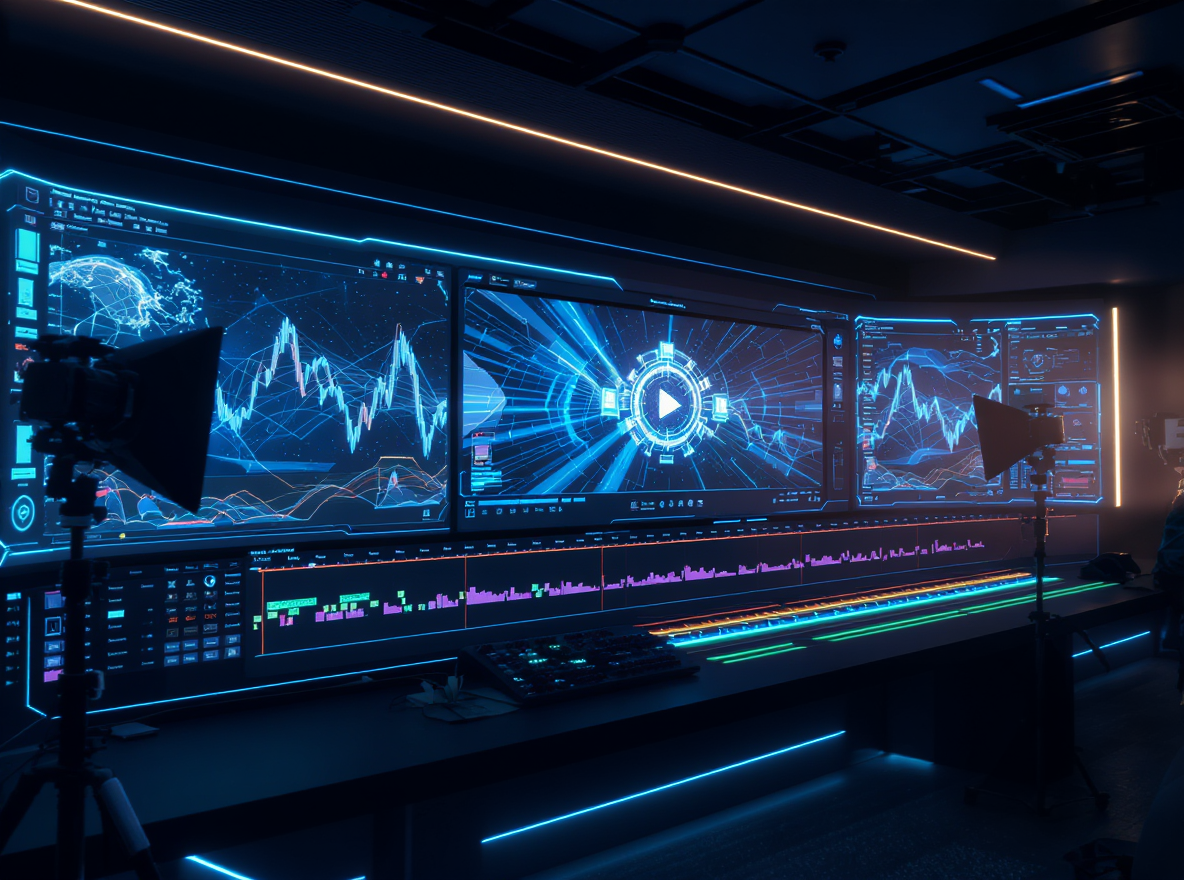
As you step into the world of stunning AI videos, you’re about to unlock a realm of endless creative possibilities. With AI models capable of processing vast amounts of data, you can now produce high-quality content that caters to individual preferences or demographics – rapidly and efficiently. But before you dive in, it’s essential to consider the ethical implications, intellectual property rights, and transparent disclosure of AI use. The question is, are you prepared to harness this power effectively and responsibly?
AI Video Generation Capabilities
Several AI models can generate high-quality videos from scratch, and these capabilities are rapidly expanding.
You’re now able to create stunning videos without needing extensive filmmaking expertise or expensive equipment. With just a few clicks, you can produce visually appealing content that resonates with your audience.
You can choose from various AI video generation tools, each offering unique features and customization options.
Some models excel at creating animated explainers, while others specialize in live-action videos. You can select the style, tone, and even the narrator’s voice to match your brand’s identity.
What’s more, these AI models can process vast amounts of data, allowing you to create personalized videos catering to individual preferences or demographics.
As AI video generation capabilities continue to advance, you’ll have even more creative freedom to experiment with innovative formats, such as interactive videos or virtual reality experiences.
Overcoming Creative Limitations
The creative possibilities of AI video generation are virtually limitless, allowing you to transcend traditional constraints and bring your most ambitious ideas to life.
With AI, you’re no longer bound by budget, location, or logistical limitations. You can create elaborate sets, characters, and scenarios that would be impractical or impossible to produce in the real world.
This freedom enables you to focus on crafting compelling stories, developing relatable characters, and conveying complex ideas in engaging ways.
AI also helps you overcome creative blocks and explore new ideas quickly.
You can experiment with different styles, genres, and narratives without investing significant time and resources. This rapid prototyping capability allows you to iterate and refine your concepts, ensuring that your final product is polished and effective.
Ethical Concerns and Boundaries
As you explore the vast possibilities of AI video generation, it’s equally important to consider the ethical implications of this technology.
You’ll need to navigate the fine line between creativity and responsibility, ensuring that your AI-generated videos don’t perpetuate biases, stereotypes, or misinformation.
It’s crucial to be mindful of the data used to train AI models, as they can reflect and amplify existing social inequalities.
You must also consider the potential consequences of AI-generated deepfakes, which can be used to manipulate or deceive audiences.
It’s essential to transparently disclose when AI has been used in video creation, maintaining trust with your viewers.
Furthermore, you should respect the intellectual property rights of others, avoiding unauthorized use of copyrighted materials or likeness.
By establishing ethical boundaries and guidelines for AI video generation, you can ensure that this technology is used responsibly and for the greater good.
Industry Impact and Trends
While AI video generation is poised to revolutionize the way you create and consume content, it’s also crucial to examine how this technology will reshape the industries that rely on video production.
You’ll see significant changes in the entertainment, advertising, and education sectors, among others. For instance, AI-generated videos will enable faster content creation, reducing production costs and timelines.
This might lead to increased content output, changing the way you compete for audience attention.
In the entertainment industry, AI-generated videos will create new opportunities for interactive storytelling and immersive experiences.
You’ll see more personalized content, such as customized product demos and virtual event experiences.
The advertising industry will also be impacted, as AI-generated Veo 5 will enable more targeted and engaging ads.
In education, AI-generated videos will enhance learning experiences, making complex concepts more accessible and engaging.
As AI video generation continues to evolve, it’s essential for you to stay ahead of the curve and adapt to these changes to remain competitive.
Best Practices for Creators
Your creative vision takes center stage when working with AI video generation, but to unlock its full potential, you need to establish a solid workflow.
This means planning your project from start to finish, considering the story you want to tell, the tone you want to convey, and the style you want to achieve.
Define your target audience and tailor your content to their needs and preferences.
Keep your script concise, clear, and engaging, as AI algorithms can struggle with complex narratives.
Organize your assets, including images, videos, and music, to ensure seamless integration.
During production, regularly review and refine your output to ensure it meets your creative vision.
Conclusion
You’re now empowered to unlock the full potential of stunning AI videos. By acknowledging the capabilities, limitations, and ethical considerations, you can harness AI’s power to craft captivating stories, relatable characters, and convey complex ideas effectively. Remember to plan carefully, define your target audience, and refine your output regularly. With AI by your side, the possibilities are endless – it’s time to revolutionize your content creation and leave a lasting impact on your audience.
